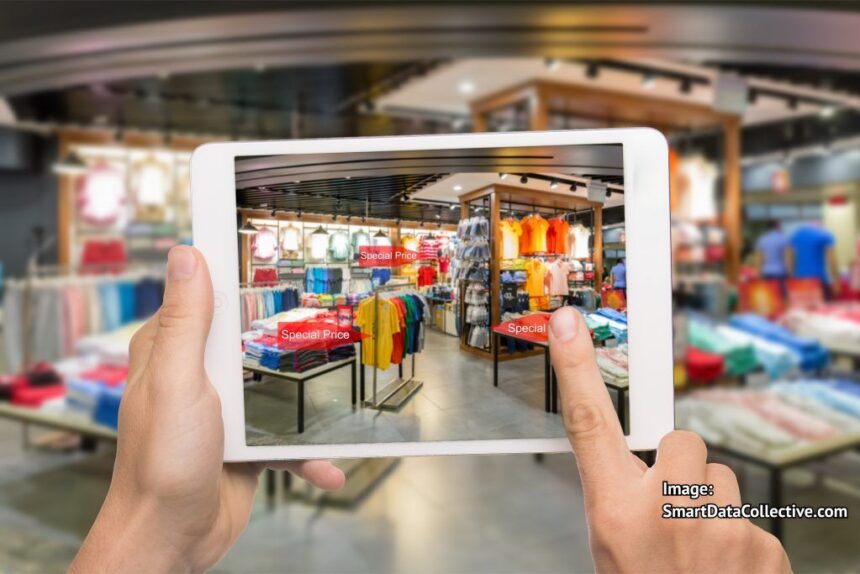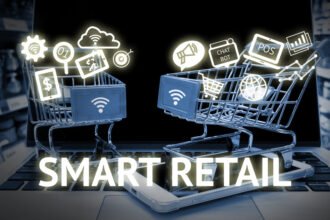It’s 2017.
As a retailer, you probably know now that retail as we (used to) know it is dead and gone. The digital revolution has well and truly taken place, so what has changed? Is the concept of the brick-and-mortar store now a part of history? How deep has digital transformation taken root in the context of retail sales?
We can boil all this down to one key issue: industry vs. technology. As in, “who follows who?” That’s what we’re about to take a look at, using some key stats and quotes from industry experts.
The Digital Transformation Of The Retail Experience
The digital revolution has changed the game quite a bit. A number of players in the retail race have gained an edge by taking advantage of tech advancements. Here’s a look at some of the highlights.
The Internet of Things
Technology like the IoT (Internet of Things) has made a huge impact. We now have 20.35 billion connected devices in use today—this enormous number is actually expected to skyrocket to over 75 billion, 10 times the global population of today!
Dynamic Pricing
Remember when dynamic pricing was a new and revolutionary technology? Also known as time-based pricing, this tech was pioneered by the hospitality and airline industries. Using key insights into consumer behavior, everyone from airline companies to sports franchises and retailers like Amazon have driven profits skywards.
Today, pretty much everyone in the retail game is using, or needs to use, this technology. Price optimization software makes use of brilliant algorithms to use buying behavior to your (the retailer’s) advantage.
Assortment Intelligence: What ‘AI’ Means To A Retailer Today
You wouldn’t bat an eyelid if someone told you that retail involves technology like artificial intelligence, data mining and image recognizing algorithms. That’s how far retail has evolved.
Incidentally, these techniques drive assortment intelligence, a way by which you can tell what products are selling well for your competitors. Imagine what that could do your catalog building, if you were to use it effectively!
These are only a few; the number of tech advancements in retail blows the mind. It’s understandable: the neck-and-neck competition means that tech like MAP (Minimum Advertised Price) monitoring is a necessity, not a luxury.
Disruption: The Name Of The Retail Game Today
An effective way to gain an edge, numerous retailers are looking to break convention and embrace tech that their competitors aren’t. Just take a look at these real-world examples.
A Better Florist
Consider this florist from Singapore.
Started by an ex-Google employee, A Better Florist is a startup that is disrupting how online florist services generally work. Just recently, they launched Betabot. This is a chatbot that can communicate with clients, giving them live updates on the status of their deliveries.
A simple use of technology, but it has given A Better Florist an edge. They’re touted as Asia’s first online florist to provide customers the chatbot experience. Orders have become fuss-free and simple, the real-time conversation providing them insights into the needs of customers.
Wayfair
This is another great example of a retail organization using tech. In this case, this home goods retailer used big data. A concept you’ve heard of already, probably.
But here’s how they used it.
This home goods e commerce store developed their own visual search to improve their customer satisfaction levels. Wayfair’s customers could take photos of things they liked in other people’s houses, or Wayfair’s rival stores, and search for similar items on the Wayfair estore.
Imagine falling in love with a quaint table at a friend’s house, or a lovely bedroom set on Pinterest. With Wayfair’s excellent use of big data, you (as a customer) can buy things by simply clicking a picture of them!
We can see clearly from these two examples that the companies won by embracing technology to disrupt conventions. By breaking the ‘rules’ set by convention and tradition, they marched forward and reaped the returns. For example, Wayfair saw an increase in repeat customers as well as increased orders: there was a whopping 55% hike in the number of repeat customers year-on-year.
But does this mean that the brick-and-mortar store is obsolete?
“So, Is The Retail Store Dead?” (Hint: It Isn’t.)
There’s been an exponential increase in e commerce in the last decade or two. Businesses have resorted to tech to drive sales. The question, then, is “Is this the end of the physical store?”
And the short answer: no. Not by a long shot.
Devin Wenig, the president of eBay Marketplaces, says “…the world of e-commerce and commerce are now just seamlessly merged, and everything is omnichannel.”
And that’s the longer answer. The world of retail is by no means limited to the World Wide Web: it’s all about the integration of the two worlds. Online and offline services are to be seamlessly integrated to create a true omnichannel experience for your customers.
Amazon—A Key Example Of Online Merging With Offline
Amazon has been experimenting with physical stores in the US since 2015. The company has opened a range of bookstores, and has even created a convenience store that doesn’t need cashiers!
The online retail giant may be a major player in the digital shopping space, but it realizes the value of the physical shopping experience. The numbers speak plainly—online retail may be massive, but online-only retail still accounts for less than 10% of retail spending worldwide. There are certain aspects to visiting a store that an online store simply cannot replicate. Other than that, there’s a direct advantage to the retailer in some cases: take Amazon’s grocery ‘pickup’ stores in Seattle, for example. You can order your fresh kitchen supplies online, and pick them up at the store.
The customer doesn’t have to trudge through endless aisles, and the retailer saves on delivery costs: a rare win-win situation!
Does The Industry Follow Tech, Or Is It The Other Way Around?
Here’s what we have to say about the whole “who follows who” question.
Offline retail as we know it is transforming: there’s no denying what’s happening right in front of our eyes, and the numbers don’t lie. Retail real estate is definitely changing, but it isn’t going to become obsolete. E Commerce is escalating at dizzying speeds, but it would be incorrect to conclude that technology alone will drive retail.
People love the shopping experience, and you’ll need physical retail space to entertain and engage your clientele. Visual merchandising is the modern-day equivalent of the old store window display. Customers are drawn to shop at your store by the multisensory experience you create. You can augment your visual merchandising strategies using big data insights and analytics.
That said, though, technology and the physical retail industry will drive each other. Stores, small stalls, and malls are all going to be driven by technology.
Square footage is key to providing the shopping experience that your customers still want, and technology will help you keep your stores fully stocked with the right selection of products. Retailers will need to rely on tech to keep service levels flying high as well.










